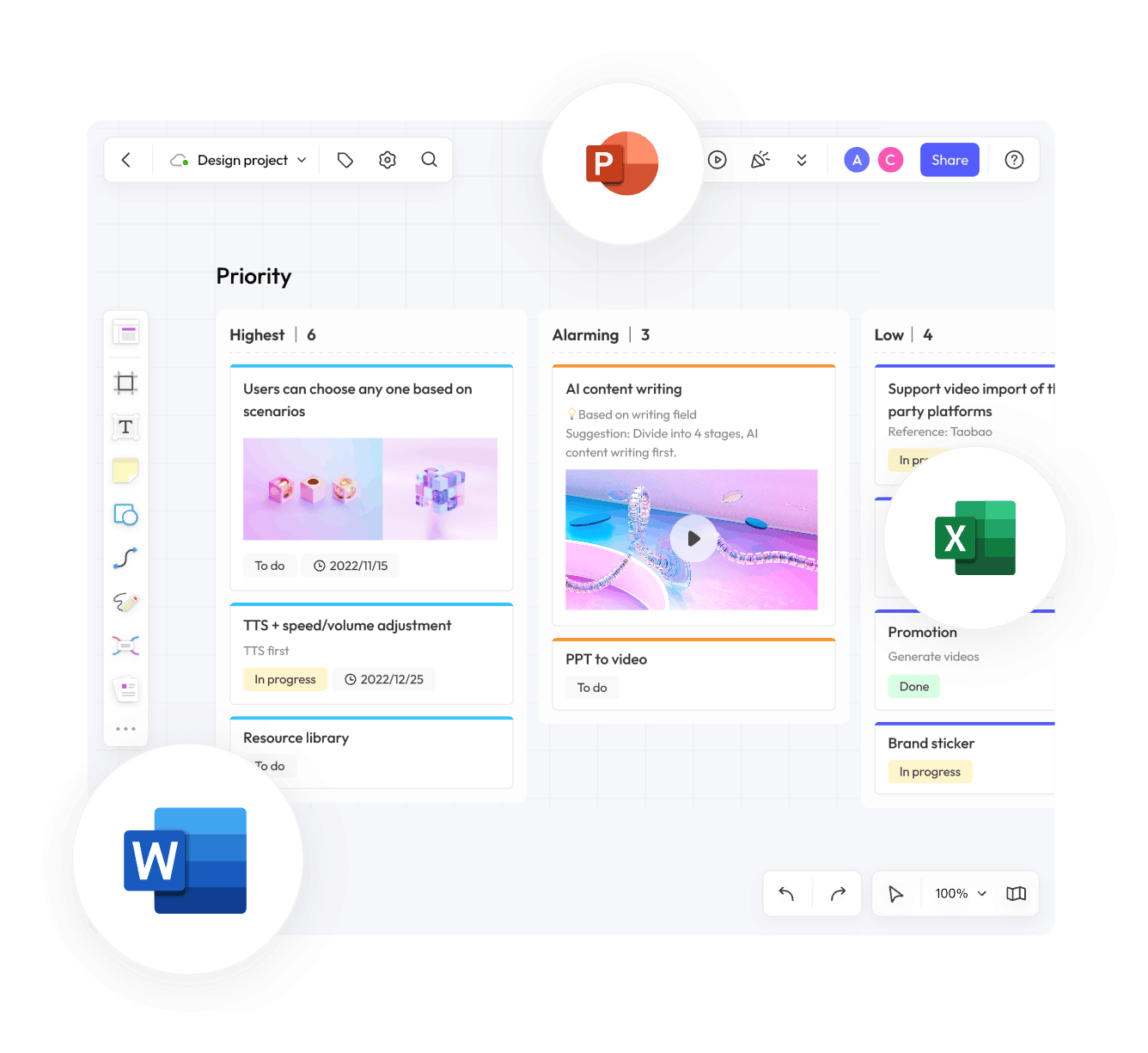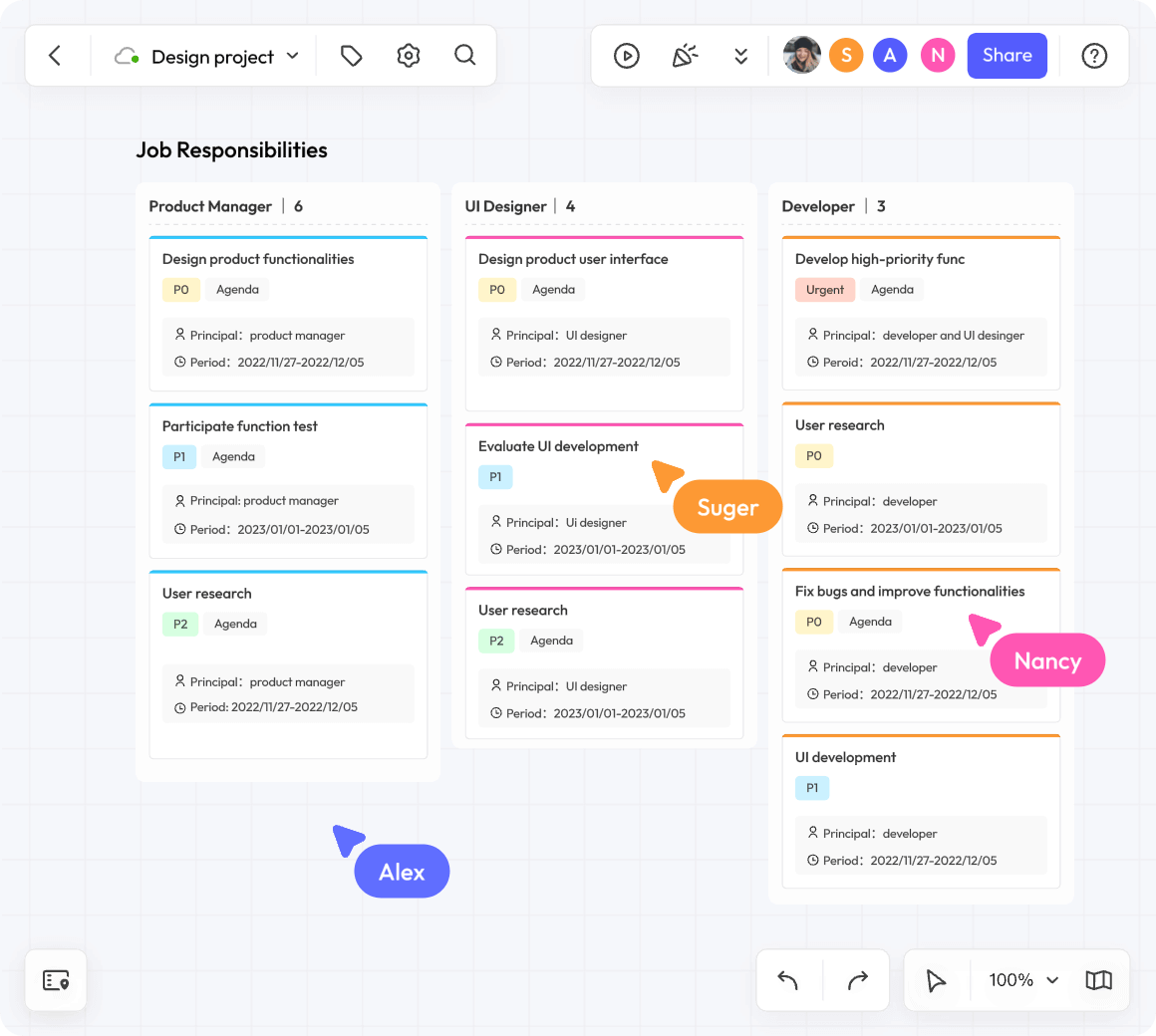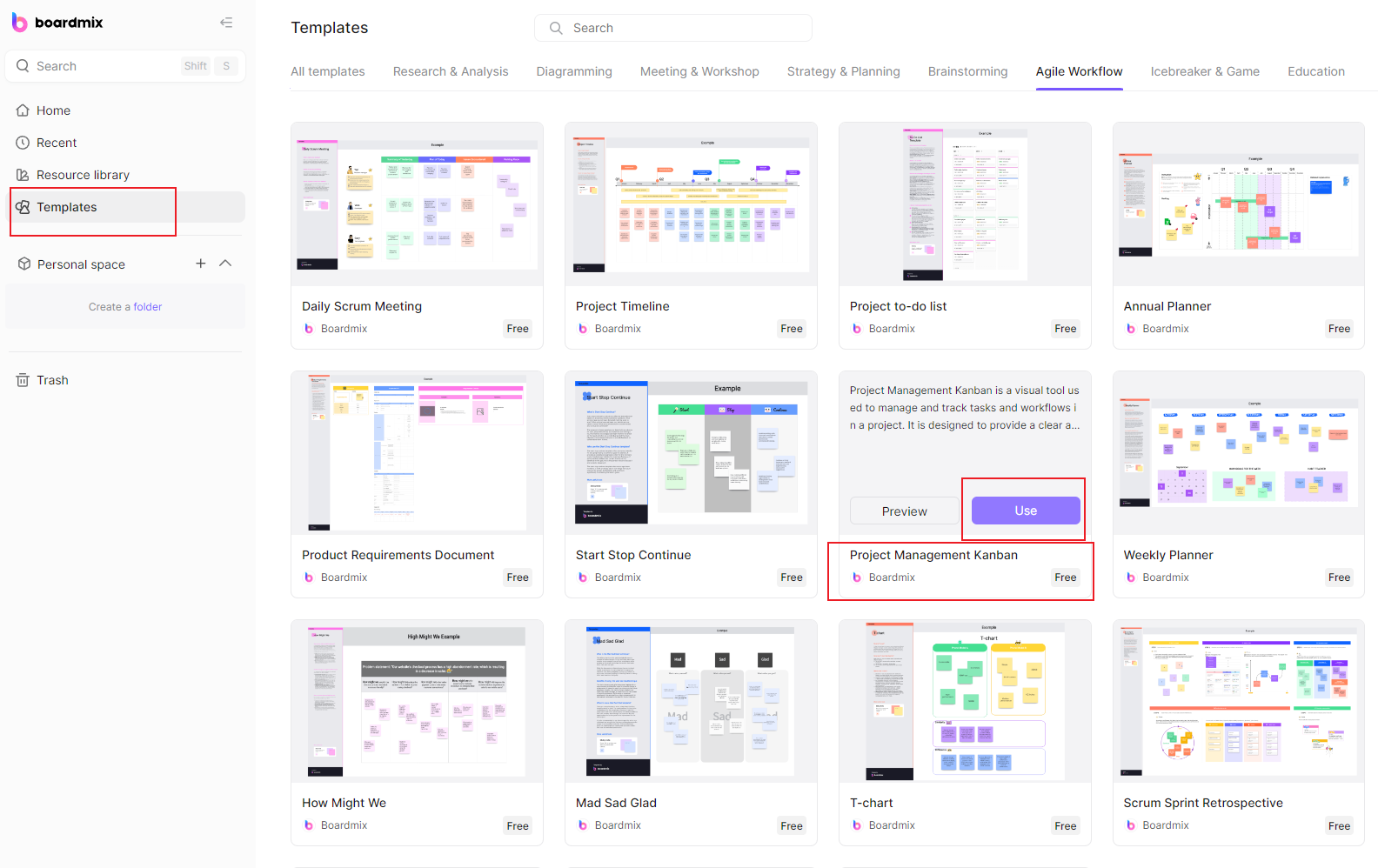Unleash the potential of your team with Kanban project management, a powerful tool for visualizing work and boosting productivity. This all-encompassing guide will take you on a journey through the origins of Kanban, its fundamental rules, and effective practices. Moreover, it will provide you with practical insights on how to successfully apply this methodology using an online whiteboard platform.
Part 1. What Is Kanban Project Management?
Kanban project management is a visually oriented workflow management approach that aims to streamline team collaboration and boost efficiency. It employs the use of a board, either physical or digital, partitioned into columns that symbolize various stages of a process. Tasks are represented as cards that move from one column to the next, mirroring their progression through the process.
Part 2. History of Kanban
The Kanban project management methodology, a revolutionary concept in workflow efficiency, was born in Japan during the late 1940s. It was first introduced within the walls of Toyota, one of the world's leading automobile manufacturers. The primary goal was to effectively manage work processes by striking a balance between demand and available capacity. This innovative approach aimed at optimizing manufacturing efficiency, setting a new standard for production systems worldwide.
Part 3. What Are the Six Rules of Kanban?
Kanban is a visual management method for software development and knowledge work. While there isn't a strict set of six rules universally recognized as "the rules of Kanban," the Kanban method is often associated with a set of principles and practices. Here are six commonly referred to principles in Kanban:
1. Visualize the Workflow: Use a visual board to represent your work process. This could be a physical board or a digital tool, but the key is to make the work visible and easily understandable for everyone involved.
2. Limit Work in Progress (WIP): Set explicit limits on the number of items allowed in each stage of the workflow. This helps prevent overloading team members and ensures that work is completed more efficiently.
3. Manage Flow: Pay attention to how work moves through the system. Aim to identify and eliminate bottlenecks and inefficiencies. The goal is to achieve a smooth and continuous flow of work from start to finish.
4. Make Process Policies Explicit: Clearly define and communicate the policies and rules that govern the workflow. This ensures that everyone on the team understands how the process works and can follow it consistently.
5. Implement Feedback Loops: Build mechanisms for gathering feedback and continuously improve the process. This could involve regular team meetings, retrospectives, or other ways to reflect on what is and isn't working and make adjustments accordingly.
6. Improve Collaboratively, Evolve Experimentally: Encourage a culture of continuous improvement. Experiment with changes to the process and evaluate their impact. Foster a collaborative environment where team members are empowered to suggest improvements and learn from them.
Part 4. What Are the Best Practices for Kanban?
Implementing Kanban effectively involves embracing a set of best practices to maximize its benefits. Here are some key best practices for Kanban:
1. Visualize the Workflow:
Create a visual representation of your work process. This could be a physical board with cards or a digital tool. Ensure that everyone involved can easily understand and track the flow of work from start to finish.
2. Limit Work in Progress (WIP):
Set explicit limits on the number of items allowed in each stage of the workflow. This helps prevent overloading team members, reduces multitasking, and improves the overall flow of work.
3. Manage Flow:
Pay attention to the flow of work through the system. Identify and address bottlenecks or areas of congestion to maintain a steady and efficient workflow. Continuously monitor and optimize the flow.
4. Make Policies Explicit:
Clearly define and communicate the policies, rules, and criteria that govern the workflow. This ensures that everyone understands how the process works and can adhere to established guidelines consistently.
5. Implement Feedback Loops:
Build mechanisms for feedback within the team. Regularly review and reflect on the process to identify opportunities for improvement. Encourage open communication and a culture of continuous feedback.
6. Improve Collaboratively, Evolve Experimentally:
Foster a culture of continuous improvement. Encourage team members to experiment with changes to the process and evaluate their impact. Embrace a mindset of learning and adapting based on feedback and experience.
7. Prioritize and Classify Work Items:
Clearly prioritize work items based on their importance and urgency. Classify tasks to make it easier for the team to understand the nature of the work and make informed decisions about prioritization.
8. Balance Demand and Capability:
Regularly assess the team's capacity and adjust work accordingly. Ensure that the demand for work aligns with the team's capability to maintain a balanced and sustainable workflow.
Part 5. Why Use Kanban for Project Management?
Kanban is a popular choice for project management due to its flexibility, simplicity, and focus on continuous improvement. Here are several reasons why teams and organizations choose to use Kanban for project management:
- Visual Management: Kanban provides a visual representation of the entire workflow, making it easy for team members to understand the status of tasks at a glance. This visual management helps in identifying bottlenecks, tracking progress, and improving overall transparency.
- Flexibility: Kanban is highly adaptable to different types of projects and work environments. Its flexibility allows teams to customize the process to fit their specific needs and adapt to changing requirements or priorities.
- Efficient Work Flow: By limiting work in progress (WIP), Kanban promotes a steady and efficient flow of work. This reduces multitasking and helps teams focus on completing tasks before moving on to new ones, leading to faster delivery and improved productivity.
- Continuous Improvement: Kanban encourages a culture of continuous improvement. Teams regularly review their processes, gather feedback, and experiment with changes to optimize workflow. This iterative approach enables teams to evolve and become more efficient over time.
- Reduced Lead Time: Kanban helps in reducing lead time—the time it takes for a task to move from the beginning to the end of the workflow. This is achieved by identifying and addressing bottlenecks, streamlining processes, and minimizing delays.
- Increased Visibility: With a visual board displaying the entire workflow, stakeholders have increased visibility into the project's progress. This transparency fosters better communication and collaboration among team members and with external stakeholders.
- Enhanced Collaboration: Kanban promotes collaboration within teams by making the workflow and individual responsibilities clear. Team members can easily communicate and coordinate their efforts, leading to improved collaboration and a shared understanding of project goals.
- Customer Focus: Kanban places a strong emphasis on delivering value to the customer. By visualizing and prioritizing work based on customer needs, teams can ensure that they are working on the most important tasks and delivering value more consistently.
Part 6. What Is the Difference Between Agile and Kanban Project Management?
While both Agile and Kanban methodologies share the common goal of enhancing project management efficiency by decomposing tasks into manageable units, their strategies diverge considerably. Agile operates within the confines of time-boxed sprints, creating a rhythm of work and review cycles. On the other hand, Kanban emphasizes a continuous flow of work, eschewing rigid time frames in favor of flexibility and ongoing progress.
Part 7: How to Use Kanban for Project Management with Boardmix
Boardmix harnesses the capabilities of online whiteboards, delivering them right to your fingertips and facilitating a smooth transition into Kanban project management. With its intuitive design and powerful features, Boardmix transforms the way you manage projects, making it easier than ever to implement Kanban principles in your workflow.
Key features include:
- 1. Easy-to-use interface: Navigate effortlessly across your projects.
- 2. Customizable boards: Tailor your boards according to your needs.
- Real-time collaboration: Collaborate with your team in real-time.
- Wide range of templates: Choose from various pre-designed templates.
- Robust task management: Track progress easily with intuitive task cards.
To use Boardmix for kanaban project management:
Step 1 – Sign in to Boardmix.
Step 2 - Create a new board and customize columns based on your workflow
Step 3 - Add tasks/cards
Step 4 - Set WIP limits
Step 5 - Start moving cards as they progress
Conclusion
Seize the opportunity to harness the power of visualization in project management by utilizing Kanban principles on Boardmix's dynamic platform. With its user-friendly interface and robust functionality, Boardmix doesn't just make project management easier—it transforms it. Experience the revolution in project management by trying Boardmix today!








